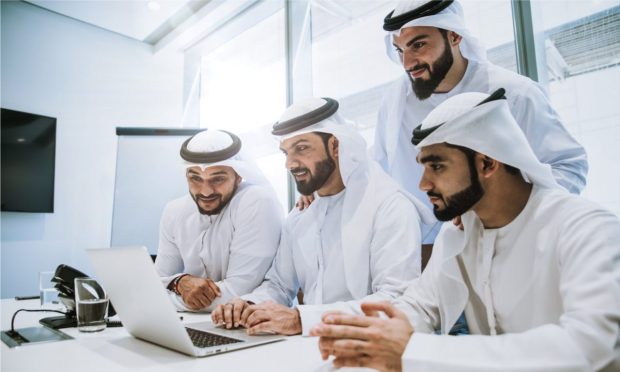The Saudi Sandbox Revolution: How Experimentation Is Driving Innovation in the KSA

PYMNTS recently reported on the state of the FinTech ecosystem in the Kingdom of Saudi Arabia (KSA) as part of a series on the Gulf Cooperation Council (GCC). That report highlighted the integral role that the kingdom’s financial authorities have played so far in cultivating Saudi Arabia’s promising FinTech sector.
Among initiatives like FinTech Saudi’s accelerator scheme, which celebrated the graduation of its second cohort of startups last month, KSA authorities have also invited local and international firms to test new financial technologies in their controlled regulatory sandboxes.
Read more: PYMNTS GCC Series: Saudi Arabia, at the Intersection of Tech and Islamic Finance
Although it may not have been the first GCC country to do so — others are the UAE, Kuwait, Bahrain, Oman and Qatar — since initially launching its regulatory sandbox in 2018, the KSA has taken the idea and run with it.
In addition to the Saudi Central Bank (SAMA) sandbox which allows for experimentation in banking and payments technology, the country’s Capital Markets Authority (CMA) runs its own initiative, the “FinTech Lab,” which deals with innovative approaches to securities markets.
As stated on its website, the goal of the SAMA regulatory sandbox is to invite “local as well as international firms wishing to test new digital solutions in a ‘live’ environment with a view to deploy them in the KSA in the future.”
Meanwhile, the CMA website states that “the [FinTech] lab is a legislative experimental environment that allows FinTech products and services to test their innovative business models within specific criteria, time period, regulatory requirements, and under the supervision of the Capital Market Authority.”
Digital ROSCAs
Since the launch of the SAMA regulatory sandbox in 2018, the KSA has ushered in a new era of financial technology. As successive cohorts have graduated from the initiative, noteworthy innovation clusters have emerged in the areas of ePayment solutions, digital-first Islamic lending — especially crowdfunding — and an exciting generation of mobile-focused rotating savings and credit associations (ROSCA).
A ROSCA is a model for financial management and saving that is popular in Saudi society. ROSCAs have traditionally been operated among friends and family, and consist of a group of individuals pooling resources to provide financial services to members.
But while traditional Saudi ROSCAs are typically informally organized among members, in recent years, mobile and online ROSCAs have brought the concept into the digital age, adding a degree of formality and security that is often absent in less formal alternatives.
As Khaled Hassoun, the CEO of one ROSCA, Circlys, told Arab News, “Our circles’ plans are no different than what people are used to. The only new thing is that you join the circle with strangers; however, they are qualified, and we ensure their ability to be part of the service.”
Circlys is not the only savings circle technology to emerge from Saudi Arabia’s regulatory sandbox. A look through SAMA’s current sandbox alumni list reveals many such digital ROSCAs have passed through the central bank’s FinTech initiative in the few years it has been operational.
Equity Crowdfunding at the FinTech Lab
Not to be outdone by the central bank, the CMA’s FinTech Lab has fostered a thriving community of startups developing investment platforms, robo-advisory tools and equity crowdfunding solutions.
Equity crowdfunding, and online financing platforms in general, have proven to be especially popular in Saudi Arabia, where the likes of Scopeer and Manafa have gone on from the CMA FinTech lab to deliver innovative platforms that connect investors with small- to medium-sized businesses (SMBs) in need of finance.
Related: Covering the Lending Gap for SMEs in the United Arab Emirates
In a country that boasts over 750,000 SMBs, according to the Saudi SMB authority Monsha’at, the equity crowdfunding model has huge potential for growth.
At the close of Q1 2022, Monsha’at also reported an 884% year-on-year increase in SMB borrowing on its own online financing platform, Funding Gate. With that kind of demand for SMB financing solutions, it’s no wonder that platforms that connect investors with businesses are one of the stand-out success stories of the CMA FinTech Lab.
Sandboxes for Emerging Technologies
Since the U.K. launched the first FinTech sandbox in 2016, the concept has branched out. These days, sandboxes have been launched that facilitate experimentation in a range of tech sectors, from HealthTech to artificial intelligence (AI).
See also: Inside the UK’s Regulatory Sandbox: How It Fosters FinTech Innovation, Drives Multisector Growth
While the SAMA sandbox is designed for testing financial services in the fields of banking and payments, and the CMA FinTech Lab is intended for experimentation in the realm of capital and securities markets, Saudi Arabia also has two sandboxes not directly related to the financial services sector.
In 2021, the Saudi Digital Government Authority launched a sandbox initiative that aims to find regulatory solutions for digital platforms and services to overcome challenges such as regulating intellectual property rights and data sharing.
Additionally, last month, the KSA’s Communication and Information Technology Commission (CITC) closed applications for the first round of its own “Emerging Technologies” regulatory sandbox.
The CITC sandbox has the stated intention of “promoting a supportive regulatory environment that will enable service providers to test and deliver innovative business models, solutions and services that accelerate digital transformation and maximize the beneficial use of emerging technologies across sectors.”
It lists its top targeted technologies as the Internet of Things, blockchain, cloud computing, digital twins, 3D/4D printing, augmented reality, virtual reality and mixed reality .
For all PYMNTS EMEA coverage, subscribe to the daily EMEA Newsletter.
